The story of the clothing and textile industry in Australia: part 3
1870s
A significant clothing industry had been established in Melbourne. Removal of restrictions on inter-colonial trade were being recommended to support the industry. Importation of cheap English good were being blamed for some loss of employment. Inter-colony rivalry was evident;
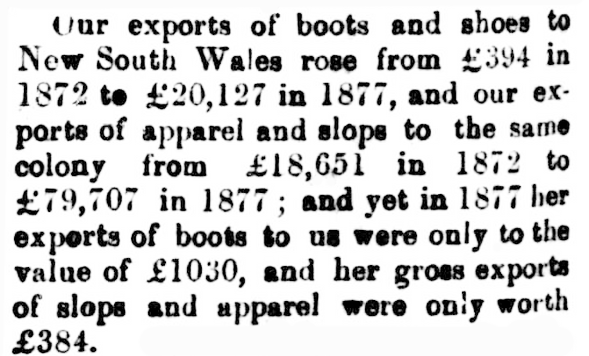
The Age (Melbourne), 28th November 1878 page 4. And for clothing …
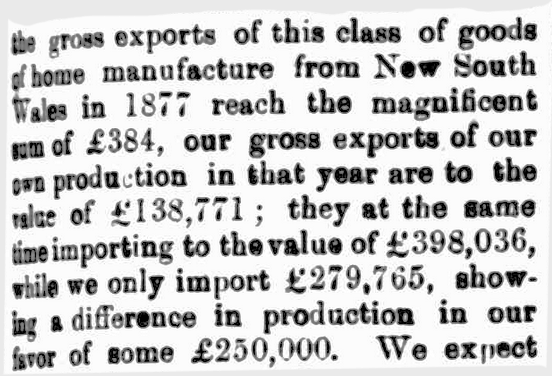
page 5
1880s
The Victorian industry, protected by duties, had “assumed colossal proportions”. Initially wages were high, but as more girls entered the trade the labour market became saturated and wages fell. (The women could be expected work from 8:30 am to 5:30 pm with half an hour break, plus 2-3 hours work at home in the evening!) Some felt that Victoria was simply producing too much stock, causing profits to fall. The colony was exporting to every other Australian colony and to New Zealand. In 1884 exports of apparel and slops (ready made clothing) made in Victoria were valued at £257,269. In Sydney there was no ‘protection’, and in 1886 there were only “several” clothing factories. In contrast, in Victoria there were by 1889 4344 clothing factories and several hundred contract out-workers. (NB: I cannot verify these figures and they were disputed by the dueling colonies.)
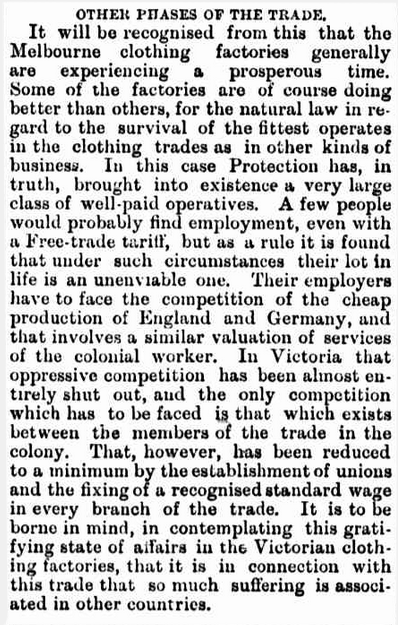
The Australian Star (Sydney), 19th October 1889 page 3.
1890s
In NSW the trade were asking for changes to tariffs there to help their industry. They told the government that 1000,000 pairs of trousers which could have been made locally were imported into the colony in the first 6 months of 1892. Victoria was at that time making 500,000 pairs of moles per month, supplying the whole of NSW as well as itself. Victoria was a bigger rival than Britain, possibly because they received “drawbacks’, i.e. a refund on duties paid on imported materials used to make clothing when the finished article was re-exported. This system may or may not have been abused. NSW workers lacked union support to ensure fair wages.
The Great Melbourne Fire of 1897 destroyed factories, warehouses, stores, etc., causing a temporary increase in orders of clothes from NSW.
1900
In Queensland the industry was young, but there were now several large factories. People taking sub-let work were still prey to “sweating” i.e. low paid, exploitative working conditions. Many factory workers were girls aged 14-20 years.
Post Federation
Federal protective tariffs now applied to all states. The industry remained strong in Victoria, and was growing in other states, although not all appreciated the increased competition.
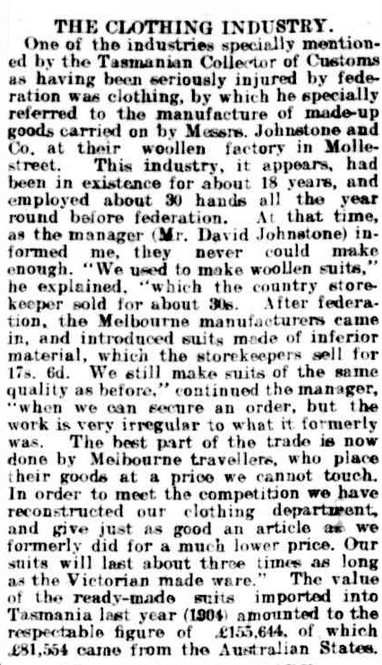
The Mercury (Hobart), 25th July 1905, page 6.
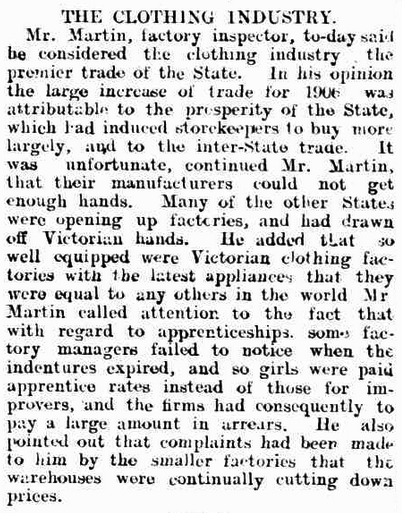
Bendigo Advertiser (Vic), 24th July 1907, page 2.
The following statistics show the importance and growth of the industry. Note that the definition of a factory is mostly not indicated, so the numbers may not be completely comparable, sorry.
1915:
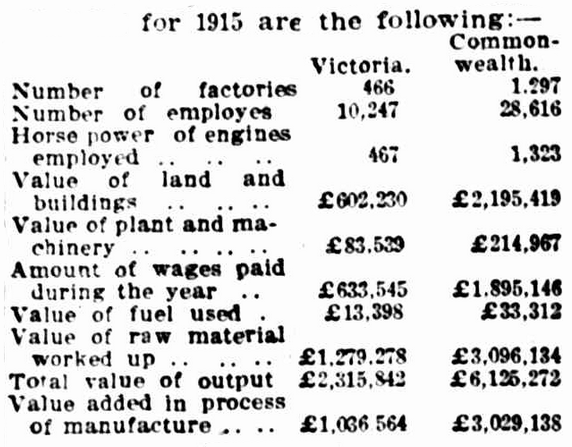
The Herald (Melbourne), 20th November 1918, page 10.
1922-23: 1418 factories employing 28,822 persons in Australia.
Victoria: 1923-33
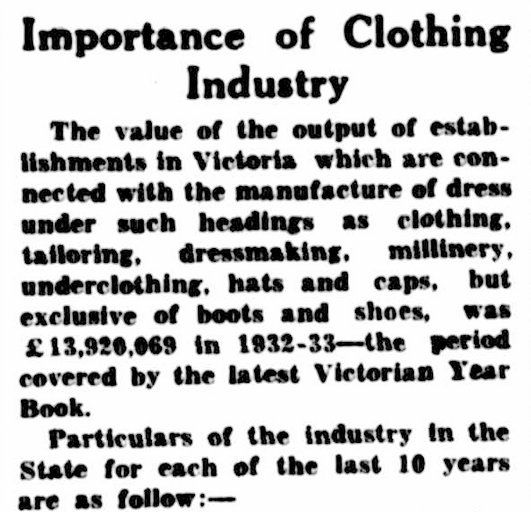
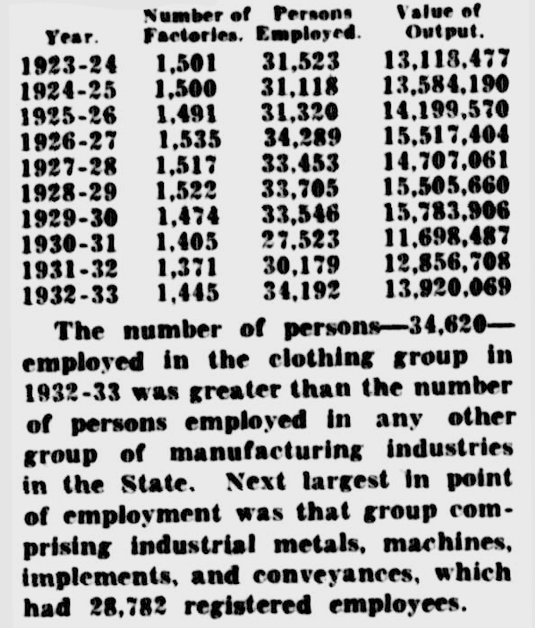
The Argus (Melbourne), 10th April 1935 page 10.
1929-30: Australian factories 3915, workers 60,069 , output £11,706,000
1936-37: Australian factories 4259, workers 82,138 , output £14,626,000.
Victorian factories 1832, 37,953 workers.
1938-9: Australian factories 4314, 86,092 workers, output £49,343,000
Victorian Output £999,288
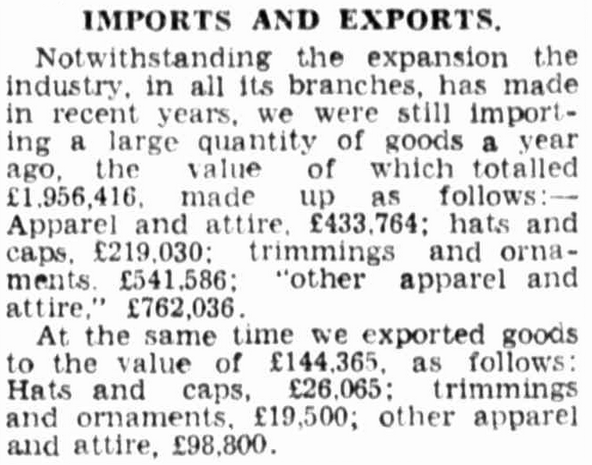
Daily Mercury (Mackay, Qld), 9th October 1941 page 7.
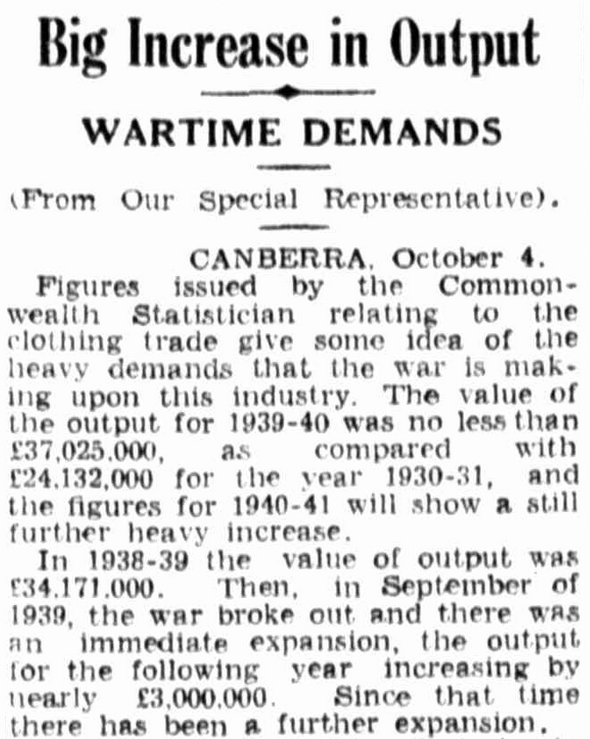
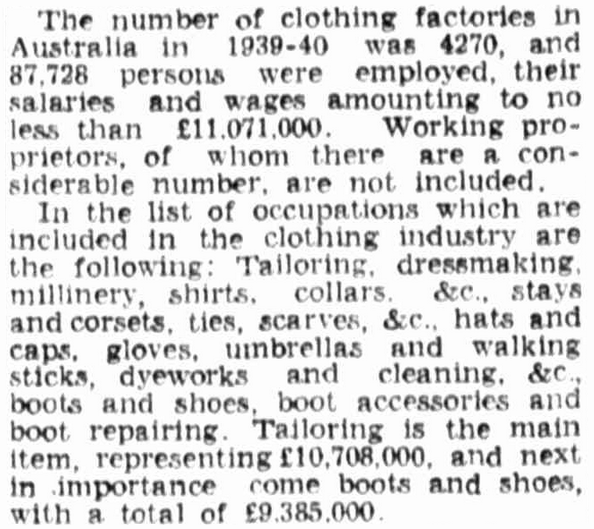
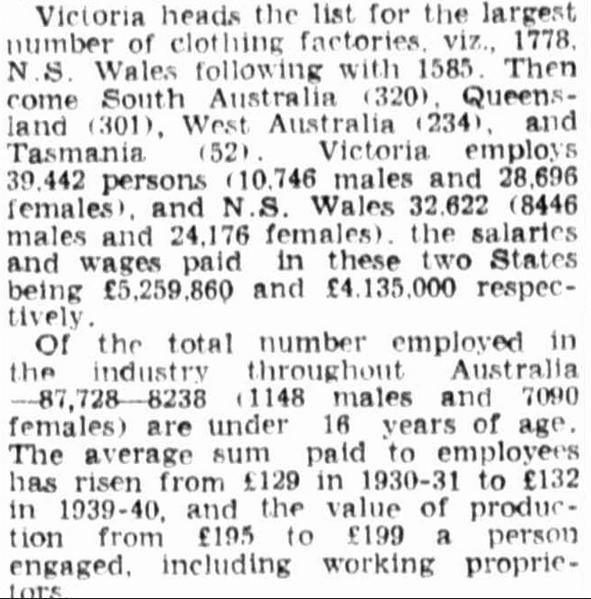
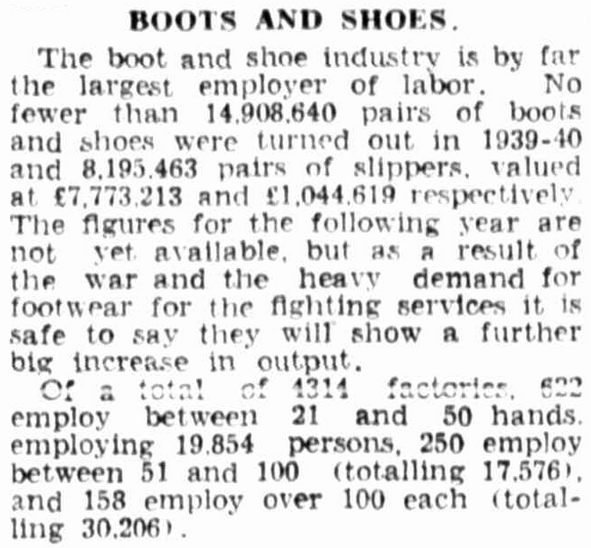
Daily Mercury (Mackay, Qld), 9th October 1941 page 7.
1944-5: Australian factories 4773 with 86,391 workers, output £59,343,000. Included were tailors, boot and shoe factories, dressmaking, shirt & collars & etc, dyeworks & cleaning.
NSW 2095 factories (workers >=4) 34,668 people
VIC 1817 35,899
QLD 288 6,210
SA 290 5,574
WA 226 3,335
TAS 57 815
1950-51: clothing output £145,720,000 verses imports: £14,072,000 textiles and £95,986,000
1952-53: The average number of workers fell by 10,000 from the previous year. Output fell to £111,500,000 due to competition from imports, according to the industry.
An article in 1965 stated that the workforce had stayed almost constant over the previous 15 years. The industry was still heavily protected at this time. Areas that faced competition from imports were mainly for cotton and synthetic textiles. Spinning and weaving had undergone considerable automation from 1960, and high speed knitting machines for hosiery and knitted goods had been introduced.
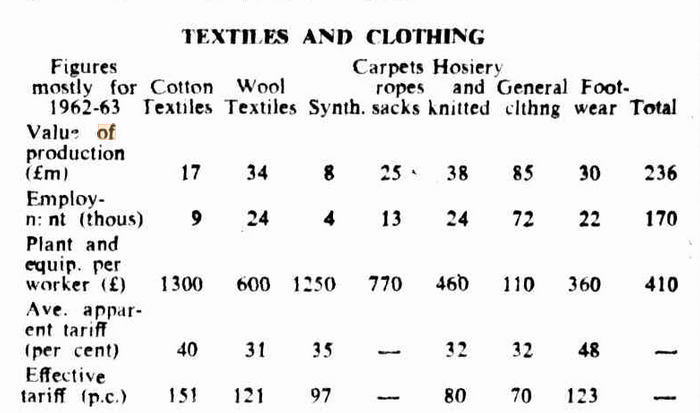
The Canberra Times, 2nd October 1965, page 14.
